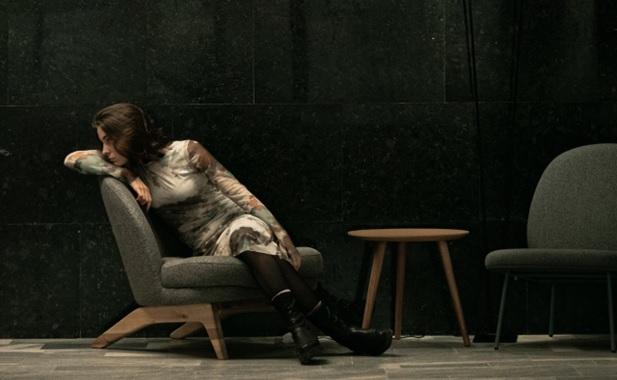The Secret Behind Iconic Furniture: History of Design Classics
Have you ever walked into a room or an office, and stopped dead in your tracks, wondering how you could own a piece of that furniture? We've all been there – marveling at the classic pieces, the timeless designs. Whether it's the Egg Chair, the Eames Lounge Chair, or the Barcelona Chair – you know it when you see it.
These iconic designs are often considered furniture classics, holding a special place in our cultural imagination. But where did they come from and how did they become so popular? How did these designs become so recognizable that they’ve become embedded in our collective memory?
In this article, I'm going to explore how certain furniture styles have weathered the test of time to come out as design classics. We'll look at how iconic pieces like the Eames Lounge Chair and Barcelona Chair achieved their cult status, and why we can't seem to get enough of them today.
Introduction to Iconic Furniture
Most of us have drooled over them, be it in interior design magazines, on Instagram feeds, or even while strolling down the living room aisle at IKEA. But hardly anyone stops to question the reason behind our fascination with iconic furniture designs. From the Eames Lounge Chair and Barcelona chair to the Tulip Table and Egg Chair, there's a certain timelessness about their designs that has made them classics and staples in modern homes around the world.
The key to understanding these iconic pieces is that all of them were born out of innovative genius, excellent craftsmanship, and exemplary style. In fact, furniture designers such as Charles and Ray Eames and Mies van der Rohe were among some of the first to popularize modern architecture. They gave us more than just chairs and tables—their work served as a form of art that has gone on to live far beyond their times.
Looking for furniture pieces that stand the test of time? Check out 1StopBedrooms' iconic furniture collection. Their iconic furniture pieces are timeless and celebrated for their design, craftsmanship, and historical significance. From mid-century modern chairs to classic Eames lounges, 1StopBedrooms has a variety of iconic furniture pieces to choose from. For more information, read reviews here.
History of Some Famous Iconic Furniture Pieces
The idea of furniture being iconic and a defining part of certain eras or styles started in the early 20th century. Many of the most iconic designs were created by famous designers, such as Charles and Ray Eames, Ludwig Mies van der Rohe, and Arne Jacobsen.
Let's take a closer look at some of the timeless design classics that stand out in furniture history and have become icons for generations:
- Eames Lounge Chair (1956) - Charles and Ray Eames designed the lounge chair to combine comfort and style with an organic look. It remains one of their most popular furniture pieces to this day.
- Barcelona Chair (1929) - Designed by Ludwig Mies van der Rohe for the 1929 Barcelona International Exposition, this chair became an icon with its polished stainless steel structure and cushions covered in full-grain leather.
- Tulip Table (1957) - This table was designed by Eero Saarinen and is crafted from cast-aluminum or molded plastic with a marble, granite or wood top. Its distinctive shape has made it an enduring design classic.
- Egg Chair (1958) – Another famous chair design by Arne Jacobsen, this piece is made from cold cured foam upholstered in fabric or leather with a steel base. Its distinctive egg-shaped structure makes it instantly recognizable.
These furniture designs will remain iconic pieces that define certain eras or styles, showing just how influential good design can be in creating timeless classics that will outlast trends.
Legacy and Cultural Significance of these Iconic Designs
We all recognize iconic furniture designs when we see them, and the influence they have is profound. The icons of modern design are timeless, they tell stories and transcend cultures. Let's take a look at iconic furniture pieces that have been around for years and still remain popular today.
- The Eames Lounge Chair
In 1956, Charles and Ray Eames designed the Eames Lounge Chair in response to the post-war modernist design movement. The chair, with its two curved plywood shells connected by leather upholstery to an aluminum frame, became an instant classic. The shape of the chair was revolutionary compared to traditional armchairs at the time—it brought a softer edge to modernism that was heartwarming and gave off a sense of comfortability, making it one of the most recognizable furniture designs in history.
- The Barcelona Chair
The Barcelona Chair was created by Ludwig Mies van der Rohe and Lilly Reich for the German Pavilion at the 1929 International Exposition in Barcelona. It was originally meant to be a throne for King Alfonso XIII but has now become synonymous with luxury lounging worldwide. Its stainless steel frame and leather cushions give it an air of elegance that is classic yet modern—a perfect blend of classic German design with art deco flair and minimalism.
- The Tulip Table
Designed by Saarinen in 1956, this pedestal table aims to eliminate any extra legroom beneath the tabletop— giving it an elegant, free-flowing look while also providing maximum legroom due to its lack of legs. Its graceful curves have made it one of the most popular tables ever created. And thanks to its simplicity, durability and beauty, it
Bottom Line
Iconic furniture designs are the sculptures and works of art that define an era, a style, or a designer's legacy. They are the quintessential expression of innovation, creativity, and beauty, capturing the spirit of a time. The history and significance of iconic furniture designs lives on today as we find ourselves coveting classics.

